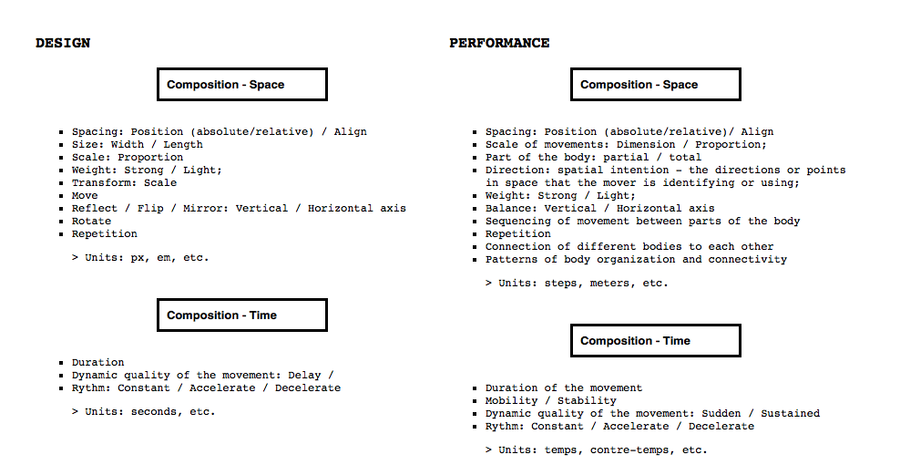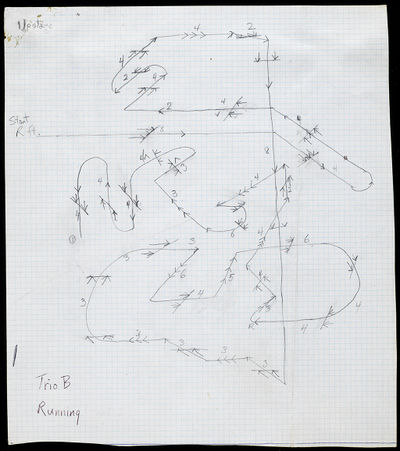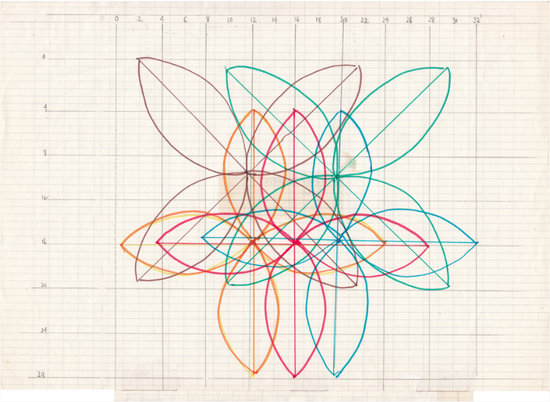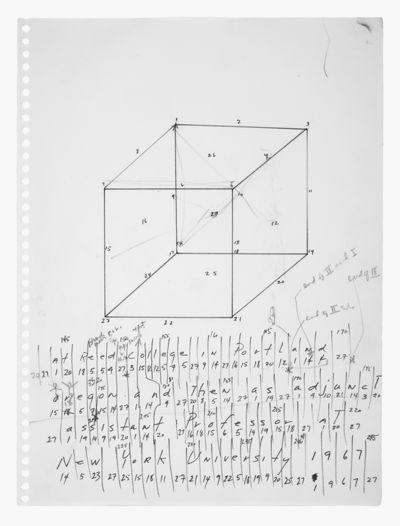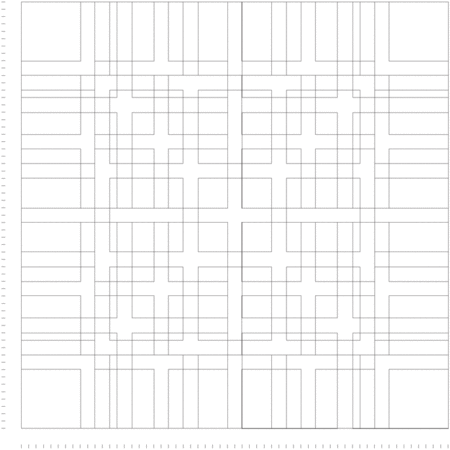Joana's Sum.
THESIS ~ Joana
Introduction
My research project explores compositional methods in graphic design and choreography. By investigating diverse graphic design methods, and a selection of post-modern choreographic approaches, I aim to research what choreographic qualities could be implemented and explored in design. And what powers of invention or transformation it sets free.
Choreographic Concepts >>>> Graphic Design = New Compositional Process (Re-articulation/ Co-formation of compositional and thematic concerns.)
My thesis will be divided in two parts: in the first part I will be concentrating in relating the references from both the design and choreography spectrum, structuring it and unveiling common threads. In the second part I will reflect on how such body of knowledge can inform my practice in the translation of choreographic principles to design, and how these can be reflected upon the current time and current circumstances.
References:
_
Design
Karl Gestner; Geoff Cox and McLean; Kenya Hara.
_
Choreography
Yvonne Rainer; Merce Cunningham; Lucinda Childs; Anne Teresa De Keersmaeker; Wiiliam Foresythe. _
Brian Massumi (media theorist); Alva Noë (philosopher/ EEC programme - Embodied Embedded Cognition)
PART 1.
The Common Ground
A cross-referencing system: http://pzwart1.wdka.hro.nl/~jo/inventory/
▪ The common languages: Mathematical and linguistic, numeric and alphabetic systems for defining/ordering (time and space). Various units of measurement have been applied to systems of order, and its application traversed various disciplines from ancient to contemporary times.
▪ The common structures: Composition (time and space): Grid Systems / Scores and Scripts. - Formal Set of principles to be applied. The process of composition has raised questions of body proportions, and our relation to time and space.
▪ On (actual and virtual) movement: Acknowledging a critical and exploratory approach to how the human movement, perception and embodiment work may give design new pointers. Presenting movement as the "basis of accessibility", allowing humans into "achieving access to the environment" (Alva Noë).
1. Yvonne Rainner, a hybrid of composition methods using languages from both mathematics and linguistic creating structures based on definitions and path mapping.
2. For her choreography piece Melody Excerpt, Lucinda Childs, developed a ‘grid’ structure to represent all possible pathways that each dancer would traverse during the performance. The units used for stage measurement were in feet; in this version, the dimensions are 32 by 28 feet. Each dancer is represented by a distinct color.
3. Trisha Brown defines dancing as something "in between geometry and the gesture” ...as in geometry everything begins, with points and everything else is a construction.
4. Since then, the grid has been commonly used as an ordering system, it would rationalize the composition process, providing both a creative and technical tool. The grid not only establishes order, but also the relations within the elements to be displayed, attributing specific inner network in the page layout. Karl Gestner would define the grid as a program: “if the grid is considered as a proportional regulator, a system, it is a program par excellence” (at Designing Programs - pp.16)

